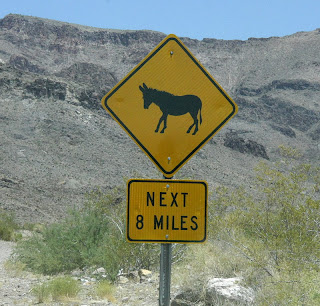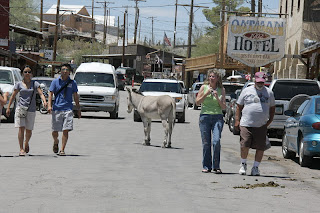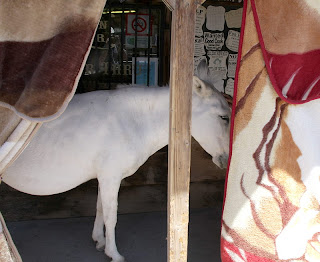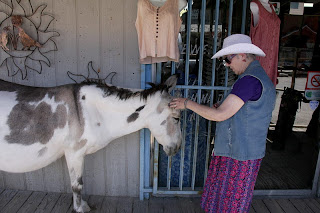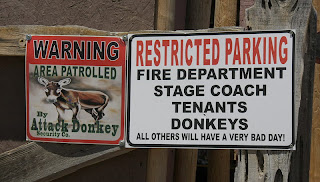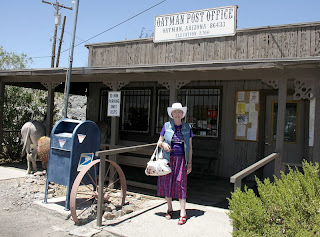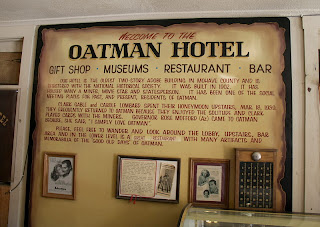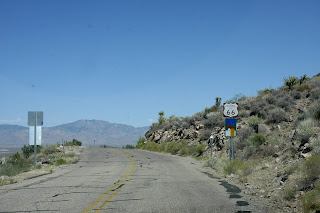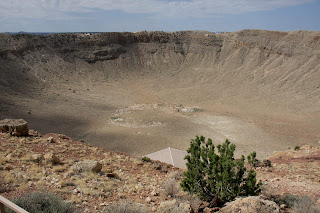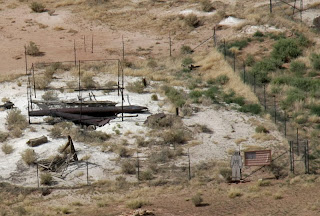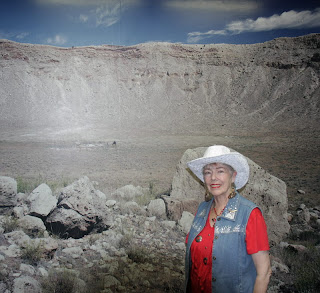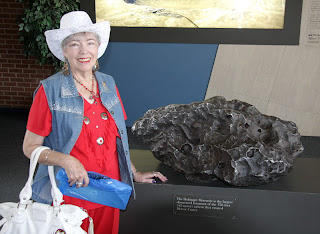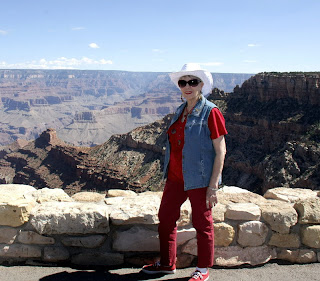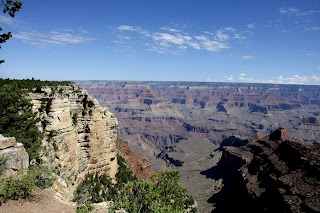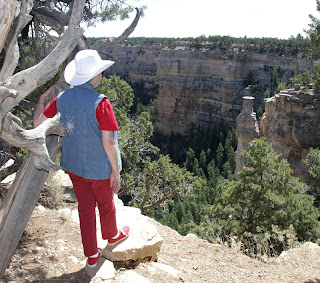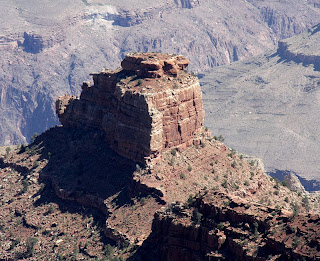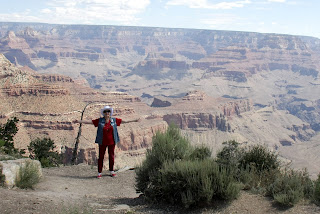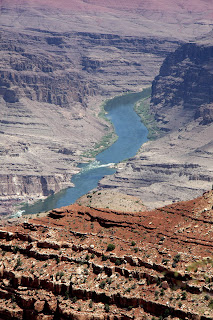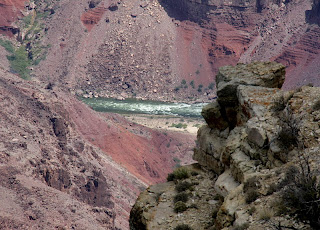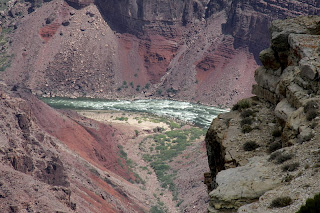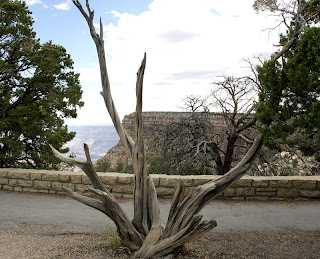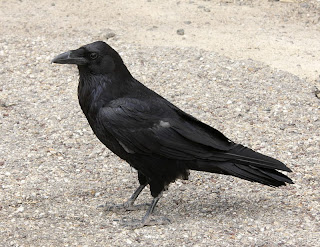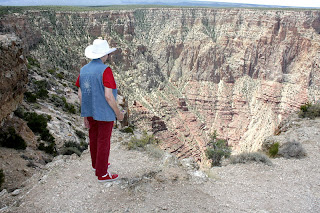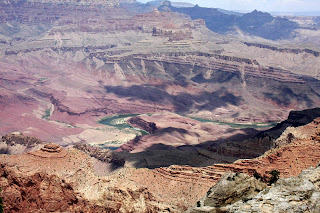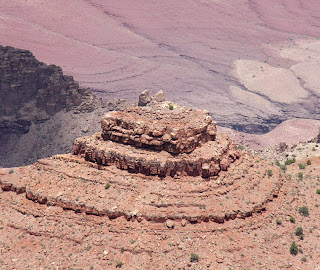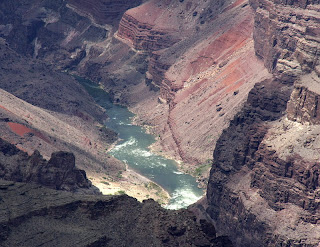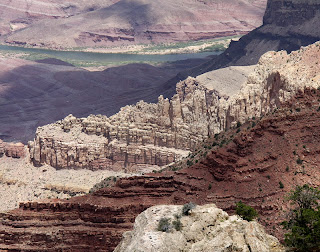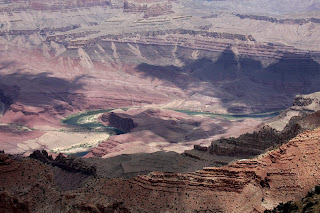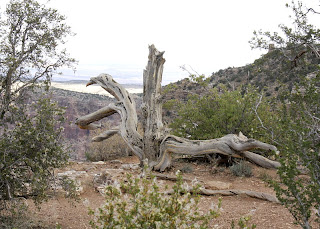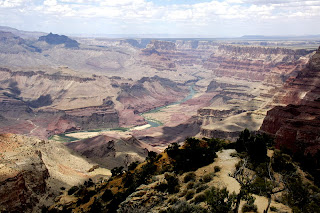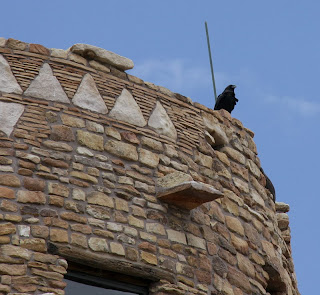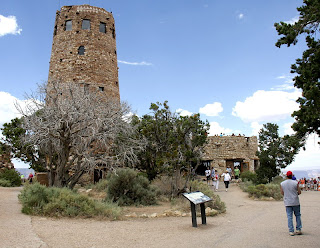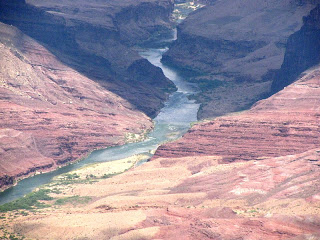On our road trip to Las Vegas, we stopped to visit Hoover Dam. What an incredible man-made creation! I went to Las Vegas High School Class of '56 and believe me the Hoover Dam has changed tremendously. For one thing, people can no longer drive across it on Highway 93, but must take a by-pass, the name of which honors Mike O'Callaghan and Pat Tillman.
There were 112 deaths associated with construction of the dam, the first death occurring on December 20, 1922 when J. G. Tierney, a surveyor, drowned. His son, Patrick W. Tierney was the last man to die thirteen years to the day later. There are myths that men caught in the pour of the dam are entombed in the dam, but engineers would never have permitted a flaw caused by the presence of a human body so it is truly a myth.
Swedish born, naturalized American citizen, Oskar Hansen created a memorial at the dam which reads in part "They died to make the desert bloom". Also, Denver artist Allen Tupper True was hired to handle the design and decoration of the walls and floors. He incorporated motifs of the Navajo and Pueblo tribes of the region, researching authentic decorative motifs from Indian sand paintings, textiles, baskets and ceramics. The images and colors are based on Indian visions of rain, lightning, water, clouds and local animals--lizards, serpents and birds--and on the Southwestern landscape of stepped mesas.
Many legal battles have been launched over distribution of water from Hoover Dam and many are still ongoing. It mainly provides power to Southern California, states of Nevada and Arizona and Los Angeles, California.
 |
| This is an explanation of the overpasses built especially for the Big Horn Sheep |
 |
| The Mike O'Callaghan-Pat Tillman By-Pass |
 |
| We are actually driving over the dam on the old Highway 93. |
 |
| A grab shot of Lake Mead as we drove over the dam. |
 |
| Many people enjoying the artwork and massiveness of the dam. |
 |
| "Winged Figures of the Republic" |
These sculptures by Oskar J.W. Hansen are 30 feet high bronze figures, each formed in a continuous pour. To put such large figures in place without marring the highly polished bronze surface, they were placed on ice and guided into position as the ice melted. These can be viewed in the dedication plaza.
 |
| Great shot of the dam and Lake Mead. |
 |
| The face of Hoover Dam, a monumental achievement. |
Thanks, Doug for all of your fabulous photography. It certainly adds much to a travelogue!
As I stated in the beginning of the road trip, I will be jumping around so that places are not necessarily in chronological order. This next section is a place we visited when we left Grand Canyon. We spied a sign on the highway "Navajo Little Colorado Tribal Park" and it piqued our curiosity.
 |
| This may be the Little Colorado River, but just look at these canyons! |
 |
| It's a looong way down, believe me! |
|
 |
| Here, we see the river bed where water is traveling underground. |
 |
| The river bed from another perspective. |
 |
| Makes one feel rather insignificant. |
 |
| There just isn't any substitute for desert hues. |
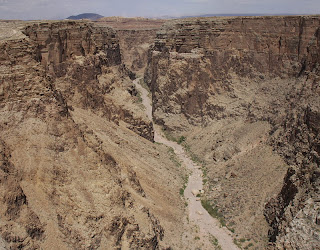 |
| And this is just what the Little Colorado River has accomplished! |
The travelogue continues so I will be back when my wonderful photographer gets more pictures ready.
This is all I have to say for now.
